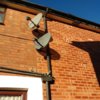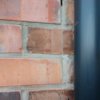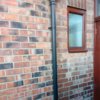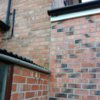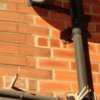You first said it's a wall, now it's a column.The plans do not show this extra half brick column on the left corner of the front elevation. Is this something the building inspector may take exception on?
Anyway the building inspector won't mind but if it's part of the work then it has to be built to a satisfactory standard.


